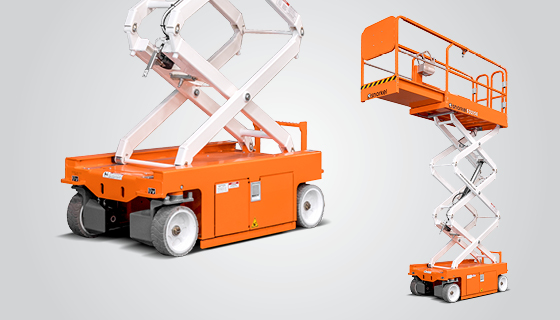7 Essential Maintenance Tips for Scissor Lifts

It's the busy season at work. You need all hands on deck, and it's imperative that all of your machinery is working well because there's no time for breakdowns to occur. In order to keep your operation running smoothly, it's important that you keep up with regular maintenance of your heavy machines.
Scissors lifts are an essential piece of equipment that you can't afford to have offline. From tree trimming to powerline repair to light bulb replacement and painting the ceiling, you depend on this piece of equipment every day. Scissor lifts are susceptible to specific hazards and breakdowns including tip-overs, electrical shocks, and falls. Here are seven essential tips for maintaining your scissor lift.
1. Keep Up with Battery Maintenance
The most important part of your machine to maintain is the battery. If the battery is not properly cared for, the overall longevity of your scissor lift can be compromised and you'll spend a lot of money and time replacing it more often than necessary. Make a habit of completing a visual inspection of the battery each day when you charge it according the manufacturer's specifications. Check for leaks and corrosion. Use the correct amperage when you charge the battery, and ensure that there is no debris build up in the battery bank.
2. Create a Daily Visual Checklist
Accidents happen most frequently when people get careless. It's tempting to jump into work the moment you arrive on site, but a 10-minute visual check of your scissor lift can prevent many problems. Create a checklist of elements that need to be inspected daily. Include testing the brakes, controls, and platform gate. Make sure that there are no visible cracks or other damage. Evaluate the work zone to make sure that you can safely manoeuvre the equipment. Heavy equipment maintenance doesn't get expensive until you allow problems to pile up. A daily checklist keeps your machine in its best shape and keeps your work running smoothly.
3. Require Regular Operator Training
Everyone thinks they can easily operate any machine but best practice is to train anyone who will be regularly using the scissor lift. Training should include what to look for in the daily maintenance checklist, how to troubleshoot potential problems, and ways to avoid unsafe equipment usage.
4. Comply with Inspection Regulations
In order to keep your insurance and licensing up-to-date, you must comply with inspection regulations. Don't wait until you realise that your inspections are out of date to try to schedule a same-day visit from a scissor lift service. Keep a schedule of necessary inspection dates so that you can plan your projects around equipment that needs to be inspected and serviced.
5. Fix Problems as They Arise
The best way to ruin your equipment quickly is to ignore maintenance problems as they arise. You might notice a bit of corrosion around the battery bank, but since the scissor lift turns on, you quickly forget about it. The platform gate latch broke, but you figured out a fix that will work for now so you keep going. Not only are these habits dangerous for you and your employees, but ignoring maintenance issues as they arise can ruin your equipment more quickly. A scissor lift that is well-maintained should last about 30 years, so if you're thinking you need to replace yours after 10 years, you're unnecessarily costing yourself thousands of dollars.
6. Call a Professional for Help
Many times, you can fix the problems that you see. When you can't, it's best to call a heavy equipment specialist. DIY fixes or approximate repairs are incredibly dangerous on the job site. Electrical shocks, falls, and tip-overs are largely preventable by committing to a daily equipment inspection and to calling a professional for help when you notice significant damage.
7. Maintain Detailed Service Records
Your maintenance checklists, inspection dates, and service requests shouldn't be stored in your head. Maintaining detailed service records is important in case there is an accident and you need to prove that you regularly and properly maintain your equipment. Keeping records also allows you to compare the efficiency of two or more machines. If one is costing you a lot of money in maintenance, it might be time for a replacement.
Scissor lifts are an important piece of equipment on to the job site. Proper maintenance ensures that everyone is safe and that your work continues without interruption.



